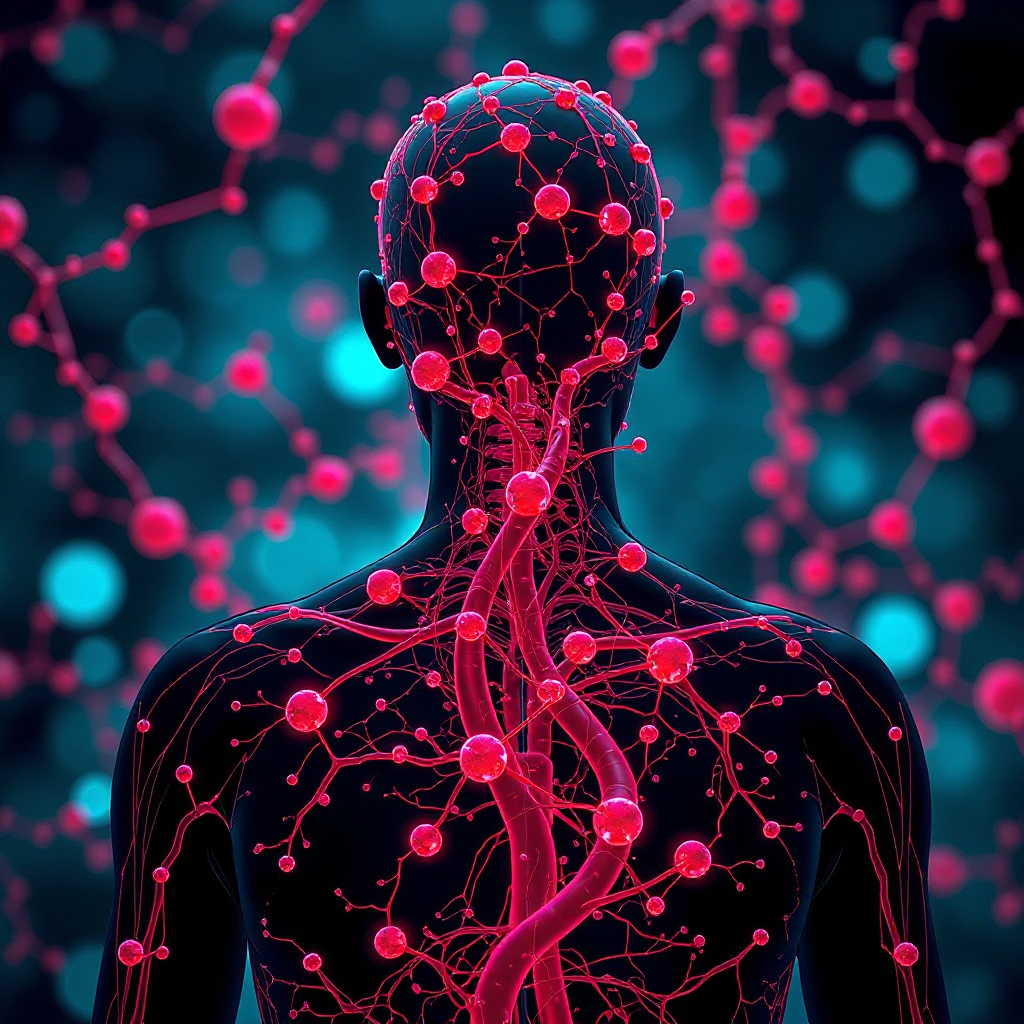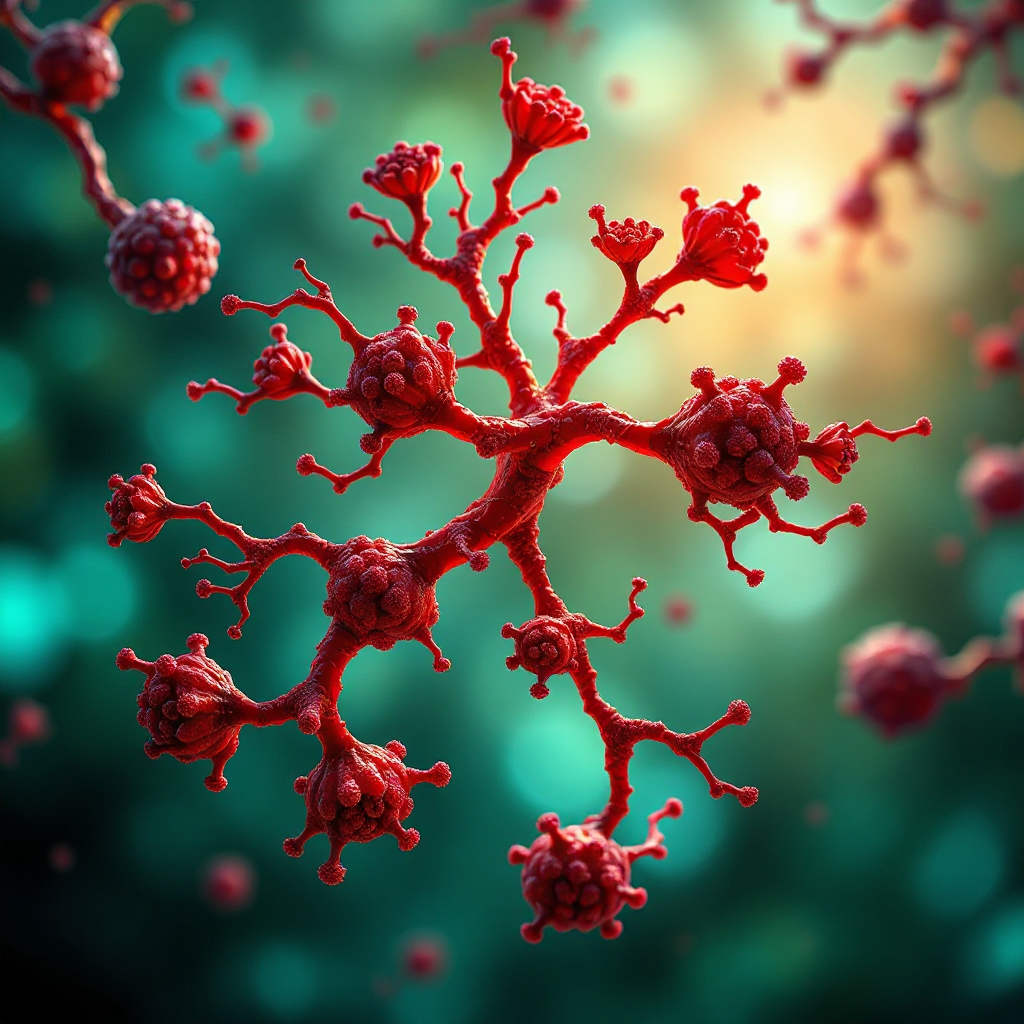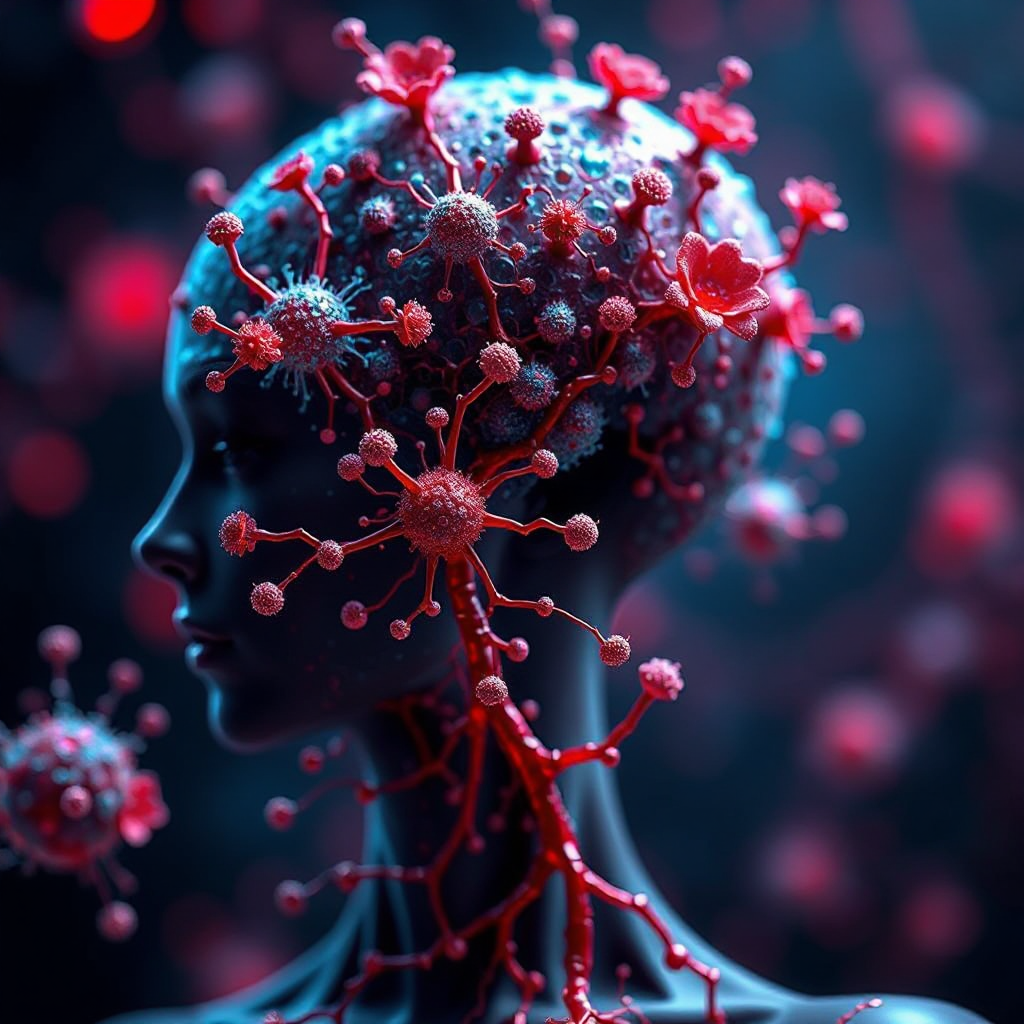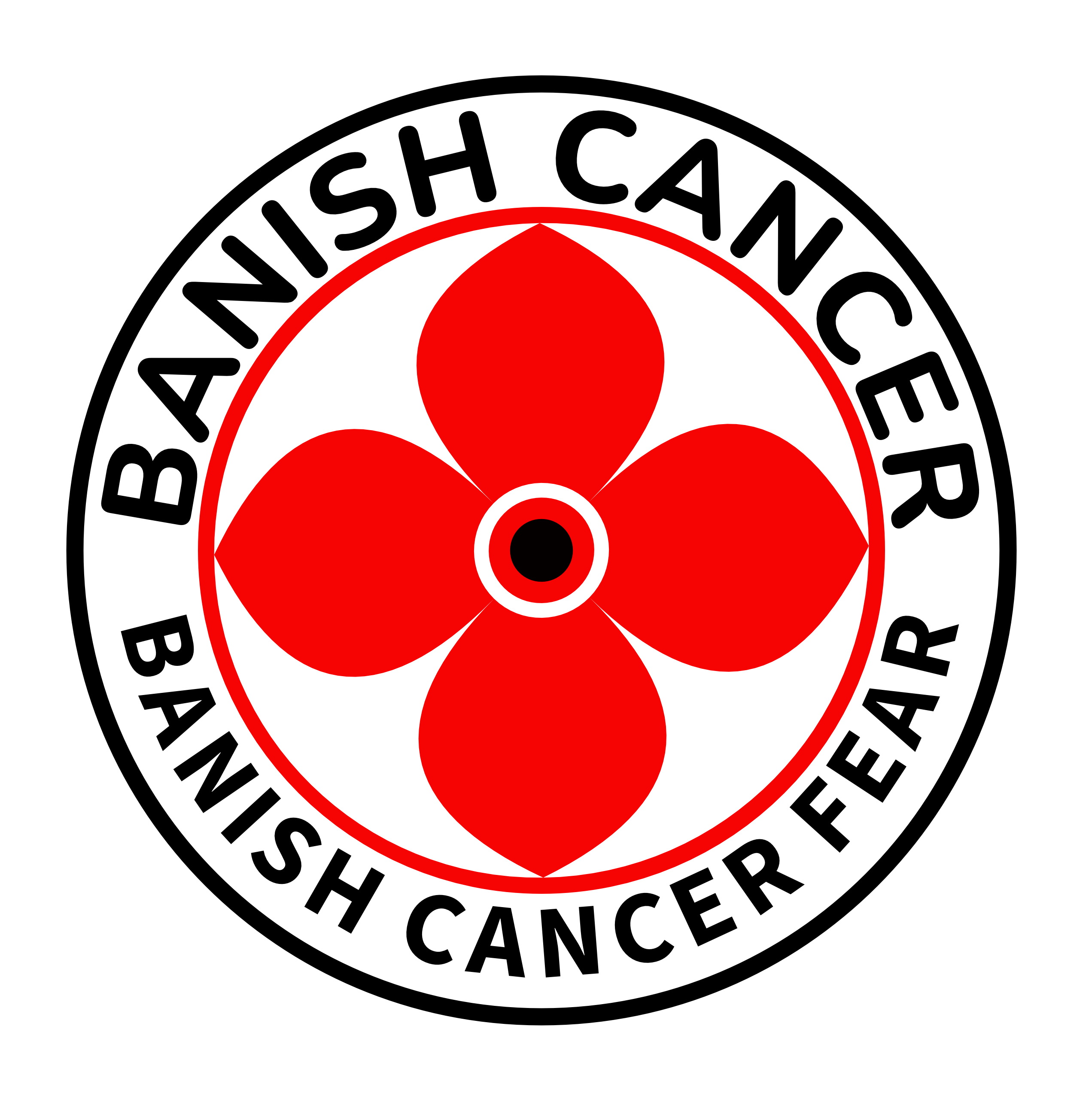Understanding Angiogenesis and Its Role in Cancer Growth

Angiogenesis and cancer treatment are closely linked, as angiogenesis refers to the process where new blood vessels form from existing ones, driven by specialized cells called endothelial cells. This process plays a vital role in healing wounds and supporting organ growth. However, tumors exploit angiogenesis to fuel their growth and spread. Cancer cells release substances that trigger blood vessel formation, ensuring a steady supply of oxygen and nutrients. Without angiogenesis, tumors cannot grow beyond 1 millimeter or metastasize to other parts of the body.
Research on angiogenesis and cancer treatment has revolutionized the way we approach oncology. In the 1970s, Judah Folkman demonstrated its critical role in tumor growth. Since then, therapies targeting angiogenesis have become a cornerstone of cancer care. For example, the FDA approved Bevacizumab in 2004, marking a breakthrough in antiangiogenesis therapy. These advancements continue to improve outcomes for patients worldwide.
Key Takeaways
Angiogenesis means making new blood vessels. Tumors need this to grow. Without it, tumors stay very small, about 1 to 2 mm.
Tumors use angiogenesis by sending out signals like VEGF. These signals help make blood vessels, giving tumors oxygen and food.
Drugs like Bevacizumab stop these signals. This slows tumor growth and helps patients feel better.
Using these drugs with chemotherapy or immunotherapy works even better. It can help people live longer with cancer.
Taking care of side effects from these drugs is important. Drink water and tell your doctor about any strange symptoms to stay healthy during treatment.
What is Angiogenesis?

The Biological Process
Role of Endothelial Cells in Forming New Blood Vessels
Endothelial cells play a central role in angiogenesis. These specialized cells line the interior of blood vessels and act as building blocks for new vessel formation. When your body needs new blood vessels, endothelial cells migrate to the required area. They then multiply and organize themselves into tube-like structures, forming the framework of new blood vessels. This process ensures that tissues receive the oxygen and nutrients they need to function properly.
Regulation by Chemical Signals Like VEGF
Angiogenesis relies on chemical signals to guide the process. Among these, VEGF (Vascular Endothelial Growth Factor) is the most powerful. VEGF binds to specific receptors on endothelial cells, triggering a series of events. These receptors activate pathways like Raf-MEK-MAPK, which promotes cell growth, and PI3K-Akt, which supports cell survival. VEGF also increases blood vessel permeability and helps break down the extracellular matrix, allowing endothelial cells to move freely.
Pathway Type | Description |
|---|---|
Raf-MEK-MAPK | Encourages cell proliferation and differentiation. |
PI3K-Akt | Supports cell survival and regulates metabolism. |
Src-FAK | Facilitates cell adhesion and migration. |
The balance between proangiogenic factors, like VEGF and angiopoietins, and antiangiogenic factors, such as angiostatin, ensures that angiogenesis occurs only when necessary.
The Importance of Balance
Consequences of Excessive or Insufficient Angiogenesis
Angiogenesis must remain balanced. Excessive angiogenesis can lead to abnormal blood vessel growth, which may feed tumors or cause diseases like age-related macular degeneration. On the other hand, insufficient angiogenesis can result in poor wound healing or tissue death due to a lack of oxygen and nutrients.
Diseases Linked to Angiogenesis Imbalance
Several diseases arise from angiogenesis imbalance. Cancer is a prime example, where tumors exploit angiogenesis to grow and spread. Other conditions include diabetic retinopathy, where excessive blood vessel growth damages the retina, and ischemic heart disease, where insufficient angiogenesis prevents proper blood flow to the heart. By understanding these imbalances, you can appreciate why regulating angiogenesis is vital for health.
Angiogenesis and Cancer Treatment

The Role of Angiogenesis in Cancer Growth
How Tumors Stimulate Angiogenesis for Oxygen and Nutrients
Tumors rely on angiogenesis to grow and survive. Without a blood supply, they cannot expand beyond 1 to 2 mm³. To overcome this limitation, tumors activate the "angiogenic switch." This process shifts the balance of proangiogenic and antiangiogenic factors in favor of blood vessel formation. VEGF, the most potent proangiogenic factor, plays a critical role in this process. It stimulates endothelial cells to form new blood vessels, ensuring the tumor receives oxygen and nutrients.
Evidence Description | Details |
|---|---|
Tumor Growth Limitation | Tumors cannot grow larger than 1 to 2 mm³ without adequate vascular supply. |
Angiogenic Switch | Tumors shift the balance of proangiogenic and antiangiogenic factors. |
Role of VEGF | VEGF is crucial for promoting angiogenesis and tumor survival. |
The Role of Angiogenesis in Enabling Metastasis
Angiogenesis also facilitates metastasis, the spread of cancer to other parts of the body. New blood vessels act as highways, allowing cancer cells to enter the bloodstream and travel to distant organs. This process makes angiogenesis a key target in cancer treatment, as controlling it can limit both tumor growth and metastasis.
Mechanisms of Angiogenesis Inhibitors
Blocking VEGF and Its Receptor to Prevent Blood Vessel Growth
Angiogenesis inhibitors disrupt the VEGF signaling pathway in several ways:
They block VEGF from binding to its receptor, preventing activation.
Some inhibitors, like bevacizumab, bind directly to VEGF, stopping it from interacting with VEGFR1.
Others, such as tyrosine kinase inhibitors, block VEGFR1 inside the cell membrane, halting downstream signaling.
Targeting Other Signaling Pathways Involved in Angiogenesis
In addition to VEGF, angiogenesis inhibitors target other pathways like PDGF and EGFR. These pathways are essential for tumor cell survival and proliferation. By disrupting them, inhibitors reduce blood vessel formation and slow tumor growth. For example, agents like sunitinib and sorafenib interfere with PDGFRs, while others impact the RAF/MEK/ERK cascade.
Combination Therapies
Enhancing Effectiveness with Chemotherapy or Immunotherapy
Combining angiogenesis inhibitors with other treatments can improve outcomes. Studies show that pairing these inhibitors with chemotherapy or immunotherapy increases response rates and progression-free survival. For instance, in advanced stomach cancer, combination therapies significantly improved overall survival.
Long-Term Administration to Manage Tumor Progression
Long-term use of angiogenesis inhibitors helps manage tumor progression by maintaining control over blood vessel growth. This approach prevents tumors from regaining their blood supply, ensuring sustained treatment benefits.
FDA-Approved Angiogenesis Inhibitors
List of Approved Drugs
The FDA has approved several angiogenesis inhibitors for cancer treatment. These drugs target specific pathways to block blood vessel growth and slow tumor progression. Some of the most commonly used inhibitors include:
Axitinib (Inlyta®)
Bevacizumab (Avastin®)
Cabozantinib (Cometriq®)
Everolimus (Afinitor®)
Lenalidomide (Revlimid®)
Lenvatinib mesylate (Lenvima®)
Pazopanib (Votrient®)
Ramucirumab (Cyramza®)
Regorafenib (Stivarga®)
Sorafenib (Nexavar®)
Sunitinib (Sutent®)
Thalidomide (Thalomid®)
Vandetanib (Caprelsa®)
Ziv-aflibercept (Zaltrap®)
These drugs have transformed the landscape of angiogenesis and cancer treatment by targeting the blood vessels that tumors depend on for growth.
Uses in Cancer Treatment
Types of Cancers Treated with Angiogenesis Inhibitors
Angiogenesis inhibitors are effective against various cancers. Bevacizumab, for instance, is widely used to treat glioblastoma, lung cancer, kidney cancer, breast cancer, colon cancer, and rectal cancer. Below is a table summarizing some common cancer types and the drugs used:
Cancer Type | Drug Used |
|---|---|
Glioblastoma | Bevacizumab |
Lung Cancer | Bevacizumab |
Kidney Cancer | Bevacizumab |
Breast Cancer | Bevacizumab |
Colon Cancer | Bevacizumab |
Rectal Cancer | Bevacizumab |
In addition to these, angiogenesis inhibitors have shown promise in treating liver cancer, neuroendocrine tumors, and soft tissue sarcomas. Their ability to target blood vessel formation makes them a versatile tool in oncology.
Success Stories and Limitations
Angiogenesis inhibitors have achieved remarkable success in improving treatment outcomes. For example, in advanced stomach cancer, these drugs significantly increased overall survival rates. Similarly, in thyroid cancer, they enhanced progression-free survival. Combination therapies, where angiogenesis inhibitors are paired with chemotherapy or immunotherapy, have also demonstrated improved results in patients with solid tumors.
However, these treatments come with limitations. Side effects such as hypertension, hemorrhage, and impaired wound healing can impact patient quality of life. Rare complications, like gastrointestinal perforation, may also occur. Despite these challenges, the benefits of angiogenesis inhibitors in cancer treatment often outweigh the risks, especially when managed carefully by healthcare providers.
Potential Side Effects of Angiogenesis Inhibitors
Common Side Effects
Hemorrhage, Hypertension, and Gastrointestinal Issues
Angiogenesis inhibitors can cause several common side effects. You might experience bleeding events, such as nosebleeds or more serious hemorrhages in the stomach and intestines. High blood pressure is another frequent issue, so regular monitoring is essential. Gastrointestinal problems, including diarrhea, nausea, and abdominal pain, are also common. These symptoms can affect your daily life but are often manageable with proper care.
Fatigue, Diarrhea, and Hand-Foot Syndrome
Fatigue is one of the most reported side effects. You may feel unusually tired or weak during treatment. Diarrhea is another frequent issue, which can lead to dehydration if not addressed promptly. Hand-foot syndrome, characterized by redness, swelling, and pain in the palms and soles, may also occur. This condition can make everyday tasks uncomfortable, so early intervention is crucial. Other possible effects include changes in skin and hair color, dry skin, and rashes.
Tip: Staying hydrated and maintaining a balanced diet can help manage some of these side effects.
Rare but Serious Side Effects
Reversible Posterior Leukoencephalopathy Syndrome
Although rare, some patients develop reversible posterior leukoencephalopathy syndrome (RPLS). This condition affects the brain and can cause symptoms like headaches, confusion, and seizures. If you notice any of these signs, seek medical attention immediately. Early diagnosis and treatment can reverse the condition.
Cardiac Failure and Impaired Wound Healing
Cardiac failure is another serious but uncommon side effect. You may experience shortness of breath, chest pain, or swelling in the legs. Angiogenesis inhibitors can also interfere with wound healing. If you have surgery planned, your doctor might pause treatment to reduce the risk of complications. Other rare issues include blood clots, heart attacks, and strokes, which require immediate medical care.
Note: Always inform your healthcare provider about any unusual symptoms during treatment. This helps ensure timely intervention and better outcomes.
Angiogenesis plays a crucial role in cancer growth and metastasis. Tumors rely on new blood vessels to expand beyond 1 mm and spread to other parts of the body. They secrete substances that stimulate angiogenesis, creating disorganized and permeable vasculature. This process not only supports tumor growth but also contributes to treatment resistance by triggering further angiogenesis under hypoxic conditions.
Ongoing research continues to refine angiogenesis inhibitors, aiming to improve their safety and effectiveness. These inhibitors have transformed cancer therapy by blocking the blood vessels tumors need to survive. When combined with other treatments, they enhance response rates and progression-free survival, as seen in advanced thyroid and stomach cancers. Their potential to reshape cancer care remains immense, offering hope for better outcomes in the future.
FAQ
What is the difference between normal and tumor-induced angiogenesis?
Normal angiogenesis supports healing and growth. Tumor-induced angiogenesis, however, creates abnormal blood vessels that feed cancer cells. These vessels are disorganized and leaky, helping tumors grow and spread. Understanding this difference helps researchers develop targeted treatments.
How do angiogenesis inhibitors work?
Angiogenesis inhibitors block signals like VEGF that stimulate blood vessel growth. By cutting off the tumor's blood supply, these drugs starve cancer cells of oxygen and nutrients. This slows tumor growth and prevents metastasis.
Can angiogenesis inhibitors cure cancer?
Angiogenesis inhibitors don't cure cancer but help manage it. They slow tumor growth and improve survival rates when combined with other treatments like chemotherapy or immunotherapy. Ongoing research aims to enhance their effectiveness.
Are angiogenesis inhibitors effective for all cancers?
No, their effectiveness varies by cancer type. They work well for cancers like kidney, colon, and lung cancer. However, some tumors may resist these drugs. Your doctor will determine if they suit your condition.
What should you do if you experience side effects from angiogenesis inhibitors?
Report side effects like high blood pressure or fatigue to your doctor immediately. They may adjust your dosage or recommend supportive care. Staying hydrated and following a healthy diet can also help manage common symptoms.
Tip: Keep a journal of your symptoms to share with your healthcare provider during check-ups.
See Also
Key Characteristics and Insights About Hemangioblastoma
A Comprehensive Overview of Angiosarcoma
Key Features and Insights Into Glioblastoma
Exploring Islet Cell Carcinoma Within The Endocrine Pancreas
